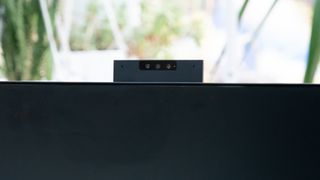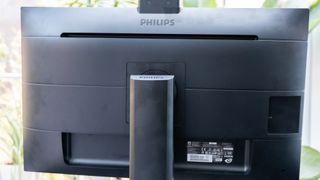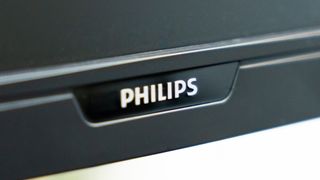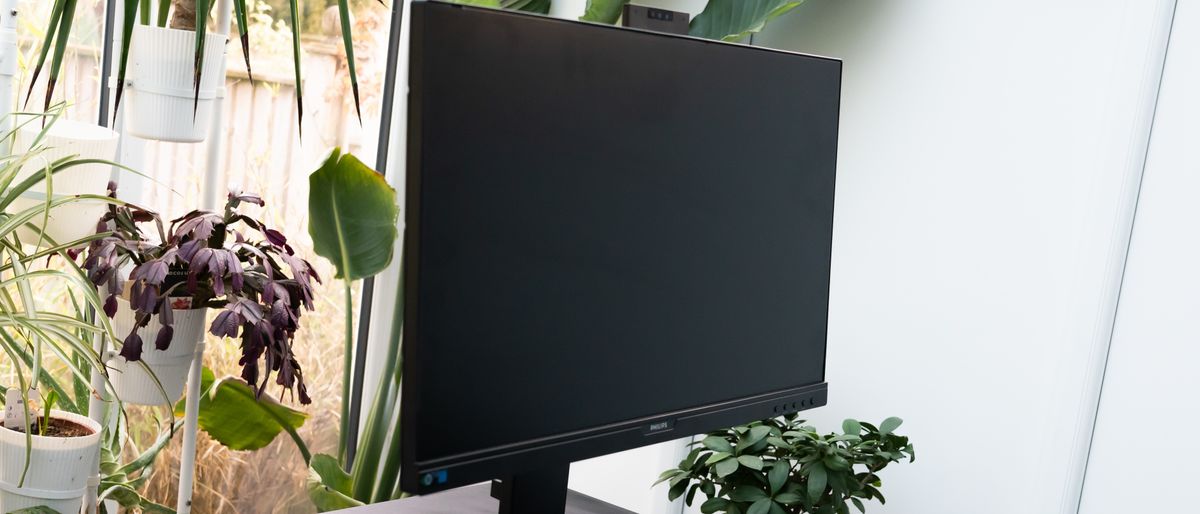Our Verdict
The Philips 276B9H is a convenient monitor to use and offers a good combination of size and resolution. The single-cable connection, if you can take advantage of it, makes use with a laptop particularly handy. While not particularly exciting, the monitor offers plenty of features, and gives a sharp, colourful picture that will recommend it to editors of all types. Gamers will appreciate the 75Hz refresh rate, while the additional resolution and finer pixel pitch offered by 1440p will be appreciated by those dealing with photography or video files.
For
- Good combination of resolution and screen size
- One-cable USB-C connection for laptops
- USB hub with fast-charge
Against
- No ethernet in hub
- USB ports tricky to access
Why you can trust Creative Bloq
Screen size: 27in
Aspect ratio: 16:9
Max refresh rate: 75Hz
Resolution: QHD, 2560 x 1440
Panel tech: IPS, W-LED backlight
Brightness: 350cd/m²
Contrast ratio: 1000:1
Supported colours: 16.7 million
Colour space coverage: NTSC 111%, sRGB 124%
Viewing angle: 178°/178°
Connectivity: DisplayPort 1.2 x 1, HDMI 1.4 x 1, USB-C 3.2 Gen 1 x 1
QHD screens, like the Philips 276B9H, hit a useful middle ground between 1080p and 4K that’s popular with gamers as well as creatives. It keeps the pixel pitch tight on larger screens without putting undue strain on the graphics processing capabilities of the computers that feed them.
This screen from Philips doesn’t do anything special or otherworldly, but with its single-cable USB-C connection, built-in USB hub, and Windows Hello webcam, has just about all the features you need to complement a MacBook Pro or similar laptop.
But can it compete with the best monitors for MacBook Pro or the best monitors for Mac mini? Read on to find out.




Philips 276B9H: Features
A 27-inch screen is a useful size for 1440p – it keeps the pixels invisible and detail sharper than 1080p would manage. It’s also a handy size for a desk, considering the size at which we tend to sit from our monitors. You can easily tile two documents side-by-side, or even have three or our windows open at the same time without any of them getting so small as to be completely unusable. For jobs that involve moving information from one place to another, like web or office work, it’s ideal.
The screen itself is an IPS panel, which means a wider viewing angle than TN panels and usually excellent colour reproduction too. This panel offers a 75Hz refresh rate, which may endear it to gamers looking for more than the standard 60FPS (and the PlayStation 5’s new-found ability to output at 1440p over HDMI may come in handy here), but being a B-Line product its true home is in an office environment.
Round the back, you get a convenient USB-C connection – the single cable with a reversible plug that can carry both the video signal, USB data for peripherals plugged into the screen’s hub, and power in the opposite direction, so the screen can charge your laptop while it’s plugged in (up to 65W in this case, which may disappoint MacBook Pro users used to the speedy charging from the 96W charger they received with their new laptop).
There are also single DisplayPort and HDMI sockets – not the two HDMIs we’ve become used to seeing, though it’s the easiest connection to use with a switcher if you want to have a games console hooked up as well as a second PC or streaming stick. The USB-C port partially makes up for this, and even if you’re using one of the other inputs, can still accept a cable to connect the monitor’s USB hub, which consists of four USB 3.2 Type-A sockets, one with fast charge.
The webcam package also connects through the USB cable and lives in a spring-loaded backpack behind the top of the monitor. It’s Windows Hello compatible, so you can use it to unlock your PC with just your face if you’re running Windows 10 or 11, and it manages a 1080p stream for video calling, with a built-in microphone and an LED to tell you when it’s working. Being able to slot it back into the monitor’s casing without having to flip it up means there's no need for a privacy shutter.

Philips 276B9H: Build and handling
The screen has a simple plastic casing with a bulge at the back for the USB hub, stand attachment and webcam package. The video inputs aren’t that easy to get to without twisting and tilting the screen, which the stand will allow, but as you’re only rarely going to need access here this is less of an issue than the recessed USB sockets, which can be tricky to get your fingers into when plugging in a cable.
The stand is a good-quality one, attaching to the same place as the VESA mount but clipping in rather than using screws, with a quick-release button for when you want to detach it. There's plenty of movement, it slides up and down smoothly (pushing the webcam down with too much force can cause it to sink on the stand) for up to 150mm of height adjustment, you can pivot it around by 90 degrees into portrait orientation, which is also useful for getting to the video inputs, and twist it through almost 180° from side to side.
The on-screen menu is accessed by easily pushed buttons mounted on the front of the display (some monitors insist on hiding their controls at the back or side, making them much harder to use) on the thicker part of the bezel. The menu is a breeze to use, offering customisation to almost all aspects of the display output.

Philips 276B9H: Performance
The 276B9H has good colour accuracy figures, hitting 111% and 124% of the NTSC and sRGB gamuts respectively, but Philips doesn’t give a figure for Adobe RGB. There's a max brightness of 350 cd/m², and a contrast ratio of 1000:1. Only the 75Hz maximum refresh rate makes it stand out from a plethora of screens that top out at 60Hz, which while of more interest to gamers will certainly help to keep all kinds of apps smooth, as long as you’ve got a computer that can take advantage of it.
The IPS panel leads to a wide viewing angle, with no greyness creeping into colours as you move to one side. Images are very sharp, with no sign of pixelation despite it being quite a large screen. There's audio pass-through, taking the sound signals from the video inputs and outputting them to a 3.5mm jack for external speakers or headphones, and Philips Smartimage for analysing content and automatically optimising performance – though you can of course turn this off using the OSD.

Should you buy the Philips 276B9H?
The 276B9H is a convenient monitor to use and offers a good combination of size and resolution. The single-cable connection, if you can take advantage of it, makes use with a laptop particularly handy, as it takes just a second to disconnect your laptop and walk off with it, or to reconnect when you return from a trip.
While not particularly exciting, the monitor offers plenty of features, and gives a sharp, colourful picture that will recommend it to editors of all types. Gamers will appreciate the 75Hz refresh rate, while the additional resolution and finer pixel pitch offered by 1440p will be appreciated by those dealing with photography or video files.
Simple to set up, with enough video inputs to keep several devices attached at once, the most important thing about the screen is its picture quality, which is good enough to make its users very happy.
Read more:

Thank you for reading 5 articles this month* Join now for unlimited access
Enjoy your first month for just £1 / $1 / €1
*Read 5 free articles per month without a subscription

Join now for unlimited access
Try first month for just £1 / $1 / €1
out of 10
The Philips 276B9H is a convenient monitor to use and offers a good combination of size and resolution. The single-cable connection, if you can take advantage of it, makes use with a laptop particularly handy. While not particularly exciting, the monitor offers plenty of features, and gives a sharp, colourful picture that will recommend it to editors of all types. Gamers will appreciate the 75Hz refresh rate, while the additional resolution and finer pixel pitch offered by 1440p will be appreciated by those dealing with photography or video files.

Ian Evenden has been a journalist for over 20 years, starting in the days of QuarkXpress 4 and Photoshop 5. He now mainly works in Creative Cloud and Google Docs, but can always find a use for a powerful laptop or two. When not sweating over page layout or photo editing, you can find him peering at the stars or growing vegetables.
